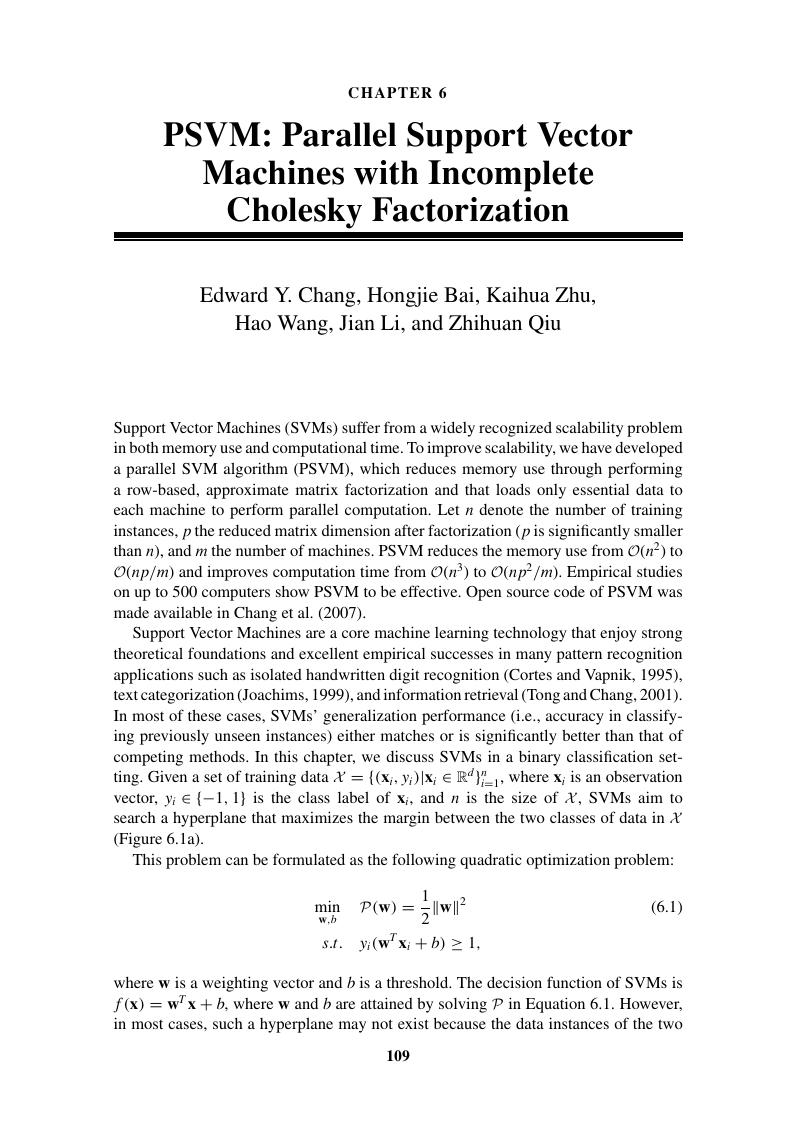Book contents
- Frontmatter
- Contents
- Contributors
- Preface
- 1 Scaling Up Machine Learning: Introduction
- Part One Frameworks for Scaling Up Machine Learning
- Part Two Supervised and Unsupervised Learning Algorithms
- 6 PSVM: Parallel Support Vector Machines with Incomplete Cholesky Factorization
- 7 Massive SVM Parallelization Using Hardware Accelerators
- 8 Large-Scale Learning to Rank Using Boosted Decision Trees
- 9 The Transform Regression Algorithm
- 10 Parallel Belief Propagation in Factor Graphs
- 11 Distributed Gibbs Sampling for Latent Variable Models
- 12 Large-Scale Spectral Clustering with Map Reduce and MPI
- 13 Parallelizing Information-Theoretic Clustering Methods
- Part Three Alternative Learning Settings
- Part Four Applications
- Subject Index
- References
6 - PSVM: Parallel Support Vector Machines with Incomplete Cholesky Factorization
from Part Two - Supervised and Unsupervised Learning Algorithms
Published online by Cambridge University Press: 05 February 2012
- Frontmatter
- Contents
- Contributors
- Preface
- 1 Scaling Up Machine Learning: Introduction
- Part One Frameworks for Scaling Up Machine Learning
- Part Two Supervised and Unsupervised Learning Algorithms
- 6 PSVM: Parallel Support Vector Machines with Incomplete Cholesky Factorization
- 7 Massive SVM Parallelization Using Hardware Accelerators
- 8 Large-Scale Learning to Rank Using Boosted Decision Trees
- 9 The Transform Regression Algorithm
- 10 Parallel Belief Propagation in Factor Graphs
- 11 Distributed Gibbs Sampling for Latent Variable Models
- 12 Large-Scale Spectral Clustering with Map Reduce and MPI
- 13 Parallelizing Information-Theoretic Clustering Methods
- Part Three Alternative Learning Settings
- Part Four Applications
- Subject Index
- References
Summary

- Type
- Chapter
- Information
- Scaling up Machine LearningParallel and Distributed Approaches, pp. 109 - 126Publisher: Cambridge University PressPrint publication year: 2011
References
- 1
- Cited by



